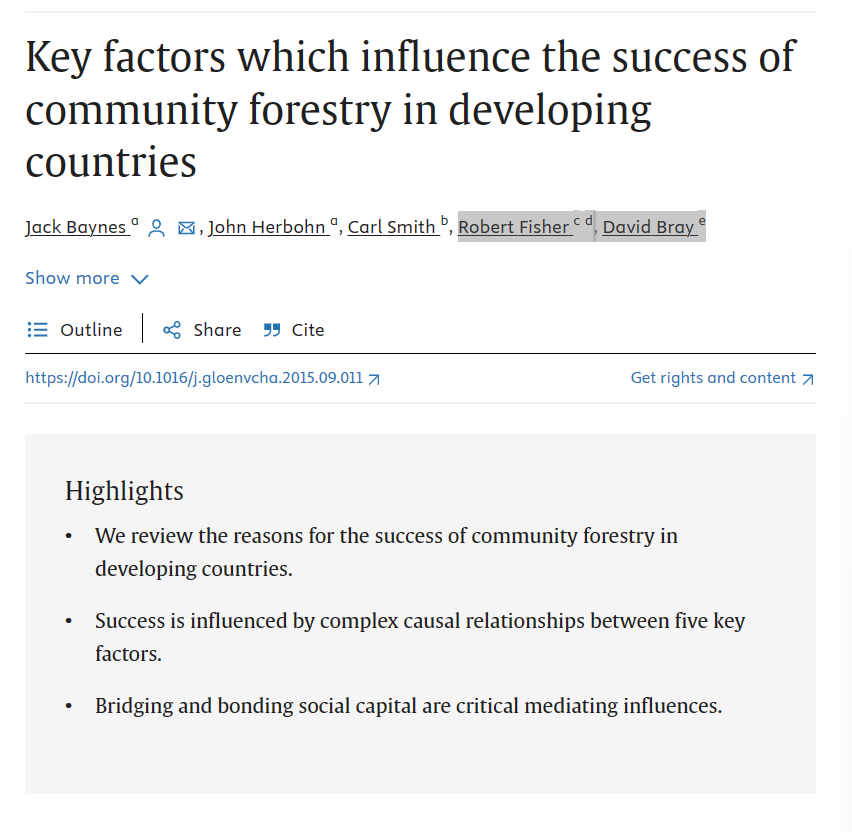Resource information
While community forestry has shown promise to reduce rural poverty, improve reforestation and potentially offset carbon emissions, many projects have failed, either partly or completely. In order to understand why community forestry succeeds or fails, we examined in detail the literature related to community forestry from three countries, Mexico, Nepal and the Philippines. We also drew on experiences in other countries in Asia, Latin America and Africa. We identified five main interconnected factors which the literature suggests are often critical to the success of community forestry. To integrate the many ways in which community forestry projects can improve the state of these factors, we use the concept of ‘bonding social capital’, i.e. communities’ ability to work together towards a common aim and ‘bridging social capital’, i.e. their ability to liaise with the outside world. To understand the interaction of the five success factors and the way in which improvements to bonding or bridging social capital may affect them, we developed a causal diagram which depicts the interrelationships between the success factors and the key points at which project inputs may be best applied. It is clear from our analysis that failing to appreciate both the complexity and interaction of the various influences may lead to project failure.

